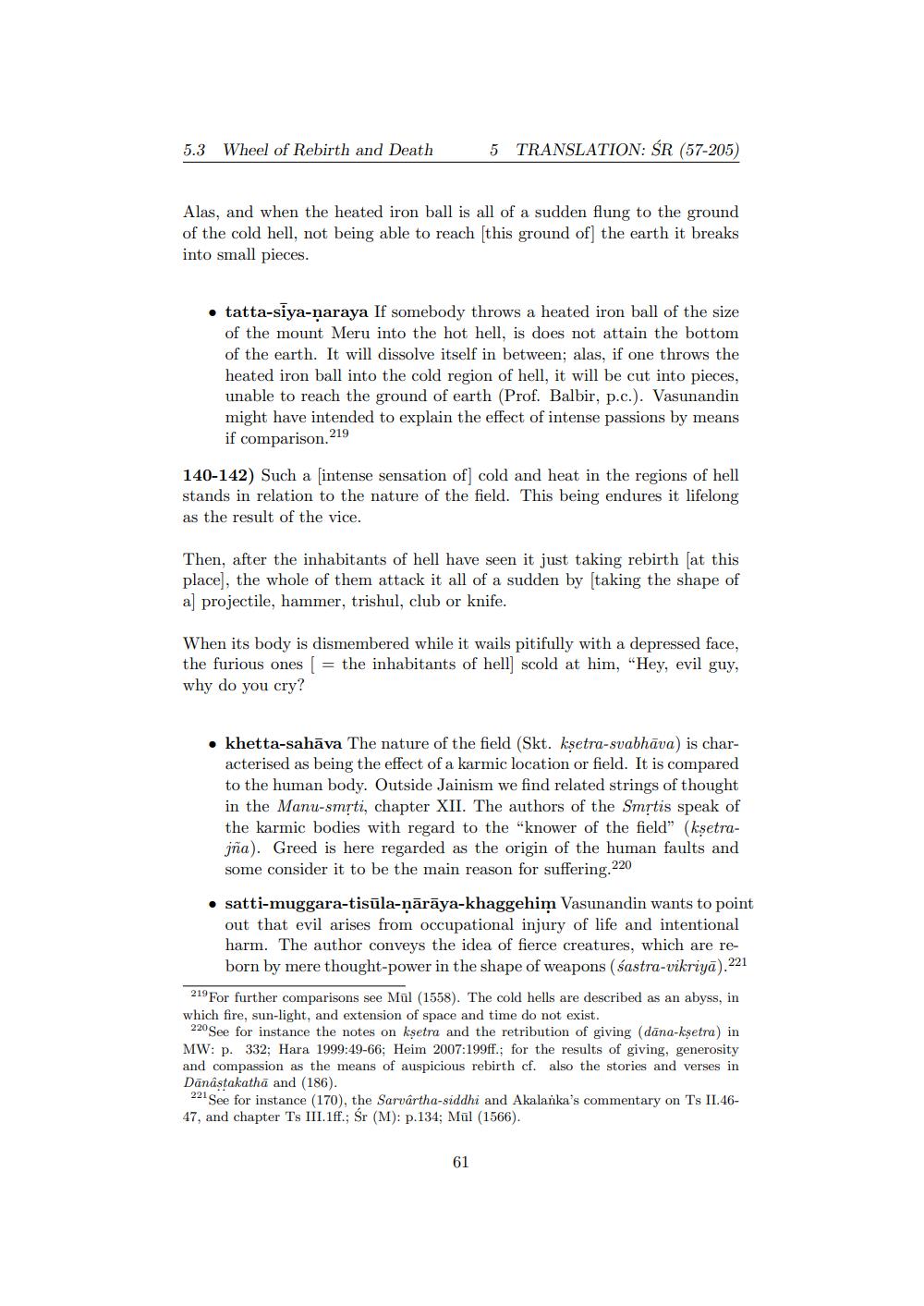________________
5.3 Wheel of Rebirth and Death
ith
5 TRANSLATION: ŚR (57-205)
Alas, and when the heated iron ball is all of a sudden flung to the ground of the cold hell, not being able to reach (this ground of the earth it breaks into small pieces.
• tatta-siya-naraya If somebody throws a heated iron ball of the size
of the mount Meru into the hot hell, is does not attain the bottom of the earth. It will dissolve itself in between; alas, if one throws the heated iron ball into the cold region of hell, it will be cut into pieces, unable to reach the ground of earth (Prof. Balbir, p.c.). Vasunandin might have intended to explain the effect of intense passions by means if comparison.219
140-142) Such a intense sensation of cold and heat in the regions of hell stands in relation to the nature of the field. This being endures it lifelong as the result of the vice.
Then, after the inhabitants of hell have seen it just taking rebirth (at this place, the whole of them attack it all of a sudden by taking the shape of al projectile, hammer, trishul, club or knife.
When its body is dismembered while it wails pitifully with a depressed face, the furious ones [ = the inhabitants of hell] scold at him, "Hey, evil guy, why do you cry?
• khetta-sahāva The nature of the field (Skt. kşetra-svabhāva) is char
acterised as being the effect of a karmic location or field. It is compared to the human body. Outside Jainism we find related strings of thought in the Manu-smrti, chapter XII. The authors of the Smộtis speak of the karmic bodies with regard to the "knower of the field" (ksetrajña). Greed is here regarded as the origin of the human faults and some consider it to be the main reason for suffering 220
satti-muggara-tisūla-ņārāya-khaggehim Vasunandin wants to point out that evil arises from Occupational injury of life and intentional harm. The author conveys the idea of fierce creatures, which are reborn by mere thought-power in the shape of weapons (sastra-vikriyā).221
219 For further comparisons see Mül (1558). The cold hells are described as an abyss, in which fire, sun-light, and extension of space and time do not exist.
220 See for instance the notes on kşetra and the retribution of giving (dāna-ksetra) in MW: p. 332; Hara 1999:49-66; Heim 2007:199ff., for the results of giving, generosity and compassion as the means of auspicious rebirth cf. also the stories and verses in Danastakatha and (186).
221 See for instance (170), the Sarvartha-siddhi and Akalanka's commentary on Ts II. 4647, and chapter Ts III.1ff.; Śr (M): p.134; Mül (1566).
61




